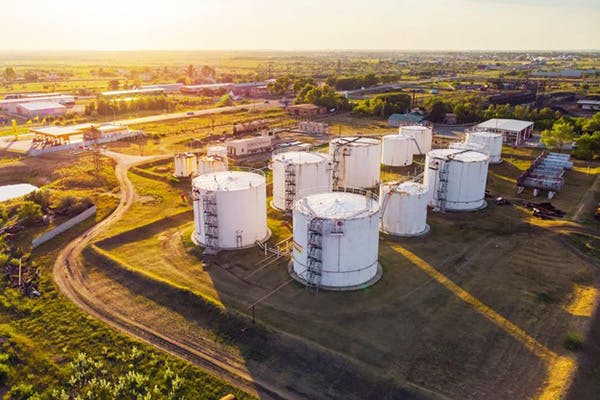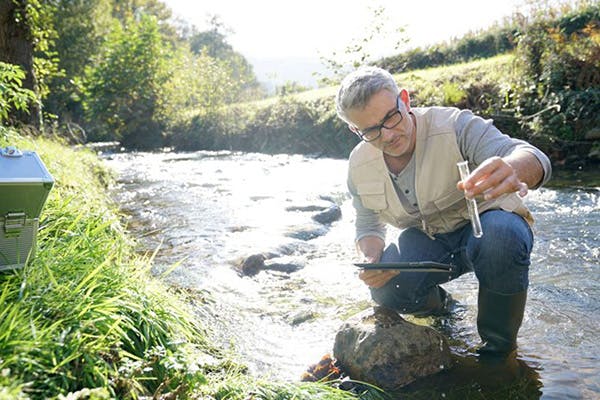November 2022
Your Complete Guide on San Antonio Water Quality
If there’s one thing to know about the Great State of Texas, it’s that Texas gets stuff done. The Lone Star State is the number one producer of oil, cattle, cotton, and a slew of other vital agricultural goods, in the country.
While the world benefits from the hard work and resources of Texas, the Texas water supply and those who are forced to live with it often get the short end of the stick.
The byproducts of oil production and runoff from agriculture can contaminate drinking water sources like lakes, rivers, and aquifers. In 2021, Texas had 3,244 drinking water violations according to the U.S. Environmental Protection Agency (EPA).
Within an hour’s drive of San Antonio are two of the biggest cattle-producing counties (Lavaca and Gonzalez) in the U.S. and the fourth biggest oil producing county (Karnes) in the state.
Let’s look deeper at San Antonio water quality.
Where Does San Antonio’s Water Come From?
When San Antonians turn on the tap, the water could be from any one of nine different natural sources, the bulk of which is the famous Edwards Aquifer. The limestone aquifer is millions of years old and is one of the most long-studied aquifers in the country. Due to a 1991 lawsuit to protect a blind salamander that calls the aquifer home, there’s now a managing body called the Edwards Aquifer Authority that conserves the aquifer.
The aquifer runs through 11 counties and provides nearly two million people with access to drinking water. It also supplies industry and agriculture with water along the way. As we discussed already, Texas has a lot of industry and agriculture that requires water, and that means a lot of potential contaminants that could enter the groundwater and surface water.
Are There Contaminants in San Antonio’s Water?
If you want to know exactly what ends up in the water from these and other sources, you don’t have to look far.
Every year SAWS puts out a report on the San Antonio water quality they supply to homes. The report talks about the likely water contaminants and whether they’ve exceeded health guidelines.
Where Do San Antonio’s Water Contaminants Come From?
According to this annual report there are several sources of contamination in the San Antonio drinking water that gets pumped into your house.
The sources that can harm San Antonio’s water quality are:
- Sewage treatment plants
- Septic systems
- Agricultural runoff
- Livestock operations
- Wildlife
- Urban stormwater runoff
- Industrial and domestic wastewater discharge
- Oil and gas production
- Mining operations
- Farming
- Residential uses of pesticides and herbicides
- Runoff from gas stations
- And the water treatment plant itself
How Contaminated Is San Antonio’s Water?
The SAWS Water Quality Report lists several dozen pollutants they test for — and usually find — in the water that goes into your home.
These include:
Microbial Contaminants
Microbials include viruses and bacteria, like coliform bacteria, which was present in 5% of their drinking water test samples. Coliform is fecal contamination and it’s as serious and disturbing as it sounds. SAWS had a positive test result for E.coli in their drinking water in 2019.
Inorganic Contaminants
These are salts and metals. Sometimes these will be naturally occurring but often come from oil and gas production, farming, and mining.
These inorganic contaminants can also come from industrial wastewater discharges, as is the case with the River City Metal Finishing plant that went out of business in 2002. Now 20 years later, the drinking water of almost 1,000 San Antonio residents is still contaminated by dangerous levels of hexavalent chromium, cadmium, lead, cyanide and more. The EPA added it to their list of cleanup sites in 2018 but nothing has been done yet.
Organic Chemicals
These are both manmade chemicals like PFAS and PFOS as well as volatile organic chemicals that runoff from gas stations, dry cleaners, and septic systems, to name a few.
PFAS and PFOS are called forever chemicals because they don’t break down in the environment or in our bodies. While they’re mostly phased out in the U.S., their persistent use on military bases across the country has led to extreme contamination in many cities, including San Antonio.
A new health advisory from the EPA recommends drinking water have no more than .02 and .004 parts per trillion of PFOS and PFOA, respectively, after research showed this buildup in our bodies can cause a slew of health problems such as:
- Low birth weight
- Decreased vaccine effectiveness in children
- Increased risk for various cancers
- Increased cholesterol
- High blood pressure
- Changes in liver enzymes
In 2018, the groundwater beneath several military bases in the San Antonio area was tested and found to have up to 680,000 parts per trillion. That is 170 million times higher than what EPA recommends in drinking water. While those concentrations aren’t directly in the drinking water, it’s important to remember that tap water starts out as local groundwater.
However, the SAWS annual water quality report doesn’t mention PFAS.
Herbicides and Pesticides
All those weed and pest killers we spray on our crops and in our yards have to go somewhere. That somewhere is unfortunately into our groundwater, where it gets recycled back into our drinking water.
Radioactive Contaminants
Yes, radioactive contaminants like radium and uranium are present in your water. Sometimes these are naturally occurring, but they also come from mining activity and oil and gas production.
Water Treatment Chemicals
Total trihalomethanes (TTHMs) are disinfection byproducts. These chemicals are created when the chlorine used to disinfect the water interacts with other compounds in the water. In animal studies they’ve been shown to cause negative health effects. There’s evidence that suggests TTHMs are cancer-causing in humans. Children are the most vulnerable.
When compared to the Environmental Working Group’s recommendations for acceptable levels of TTHMs and the San Antonio water supply is way over. However, they’re well within the EPA’s much higher acceptable range.
We can also include fluoride in water treatment chemicals since much of it is added here. However, fluoride is also found in groundwater naturally in smaller amounts.
Secondary Contaminants
There are also secondary contaminants not reported here. These change the color, taste, and odor of your water but aren’t considered harmful, like calcium, iron, and sodium. An unpleasant experience isn’t necessarily an unhealthy one, but it’s something you might want to address through home water filtration.
Does San Antonio Water Quality Violate Any Laws?
It’s valid to wonder if SAWS is in violation of water quality standards. However, in many situations, the maximum contaminant level allowed by the EPA isn’t enforceable. Instead, the EPA puts out health advisories that create voluntary recommendations.
Water utilities are free to follow them or not. States can also set enforceable laws. The SAWS water quality report notes that “No Source Water Susceptibility Assessment for your drinking water source(s) has been conducted by the Texas Commission on Environmental Quality for your water system.”
To muddy up the water more, even the recommended limits by the EPA are often not based solely on human health, but on cost and feasibility. This is why you see the Environmental Working Group often has much lower recommended allowances than governments. The EWG only takes health into account. The EPA has to consider health and feasibility when making recommendations.
Why Is San Antonio’s Water So Hard?
Water is considered hard when it contains a large amount of dissolved minerals like calcium and magnesium. As groundwater filters through dirt and rocks, it dissolves some of the solids and carries them along. Most of San Antonio’s water comes from the Edwards Aquifer, which is a limestone formation.
When the water passes through the aquifer it dissolves the limestone and becomes hard water. Water treatment plants don’t filter out these minerals because even though they’ll do a number on your pipes, clothing, appliances, and skin, they aren’t considered dangerous to human health.
You Can Enjoy Pure Water in Your Home
While you may not be able to control the San Antonio water quality, you can still have peace of mind at home. HomeWater’s North American-made products remove potentially dangerous contaminants as well as unpleasant tastes and odors before they reach your glass.
Check out our HomeWater whole house 4-stage filtration systems. Every appliance, shower, and sink in your home will flow freely with only pure, great-tasting water. It has a 1,000,000-gallon capacity and it won’t affect your water pressure. Add on a water softener for better skin and no more soap scum. Your appliances will thank you.
If that’s not your speed, we have easy-to-install under-the-counter 2-stage and 4-stage filtration systems too. Our 4-stage option uses reverse osmosis to filter almost any contaminant away with ease. Feel good about the water in your home with HomeWater.
Brought to you by homewater.com
All images licensed from Adobe Stock.



